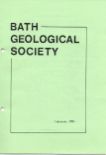The Geology of Kilauea Volcano, Hawaii

The twenty islands that make up the Hawaiian group are made entirely of basalt and seem to be over a plume or hot-spot in the Mid-Pacific ocean. Copious basalt flows have created a series of seamounts or under water volcanoes which stretch in a north westerly direction from the present Hawaii island. This suggests that the ocean floor is moving in that direction also.
On Hawaii itself there are five volcanoes of the shield type, the oldest being in the north west of the island and Mauna Loa at 14,000 ft the highest. Where these volcanoes meet there are rift zones criss-crossing the island, and are prone to earth tremors.
Kilauea is the most active at present, having small eruptions every two to three months. The last big one lasted from 1969-1975. This was well documented by the USA Monitoring Laboratory on Mauna Loa. These shield volcanoes have a gentle slope of only 10 degrees, the basalt welling up and overflowing at a temperature of 1150 degrees C. The lava often erupts from side fissures or vents and forms rivers of basalt flowing downhill in a channel of its own making before spreading out into deltas on the lower slopes. The outside cools very quickly and forms a glass toe-like structure, and from underneath this another develops, and so on down the mountain side. This ropey, crescentic pattern is made by basic lavas and is known as Pahoehoe. When cold and solid it has been found that these rivers develop caves, just as in underground rivers in limestones. These cave systems have only just been found, with stalactites, stalagmites and straws made in basalt. The sides of these tunnels are coated with volcanic glass with magnetite crystals, probably from the hot gases which would have followed the lava when the eruption ceased. The tubes often have roof falls thus marking the course of these lava rivers.
After an eruption the craters when cool collapse back into the magma chamber, leaving steep, almost vertical sides, where the lava flows can be seen almost like sedimentary layers and often very thin.
Another type of lava which flows more rapidly and cools into rough, blac and blocky fragments is known as Aa. This is not so common on Hawaii. Petrologically the basalts are tholeiitic with a capping of the more alkaline basalts.
The area round Mauna Loa and Kilauea has been made into a National Park, with with an hotel on a crater rim, a Chain of Craters Road, when is liable to subsidence, from which to which to view the lava tree moulds, the fumaroles, and the lava tumulus in the volcanic landscape.
